“I came across your profile on LinkedIn”
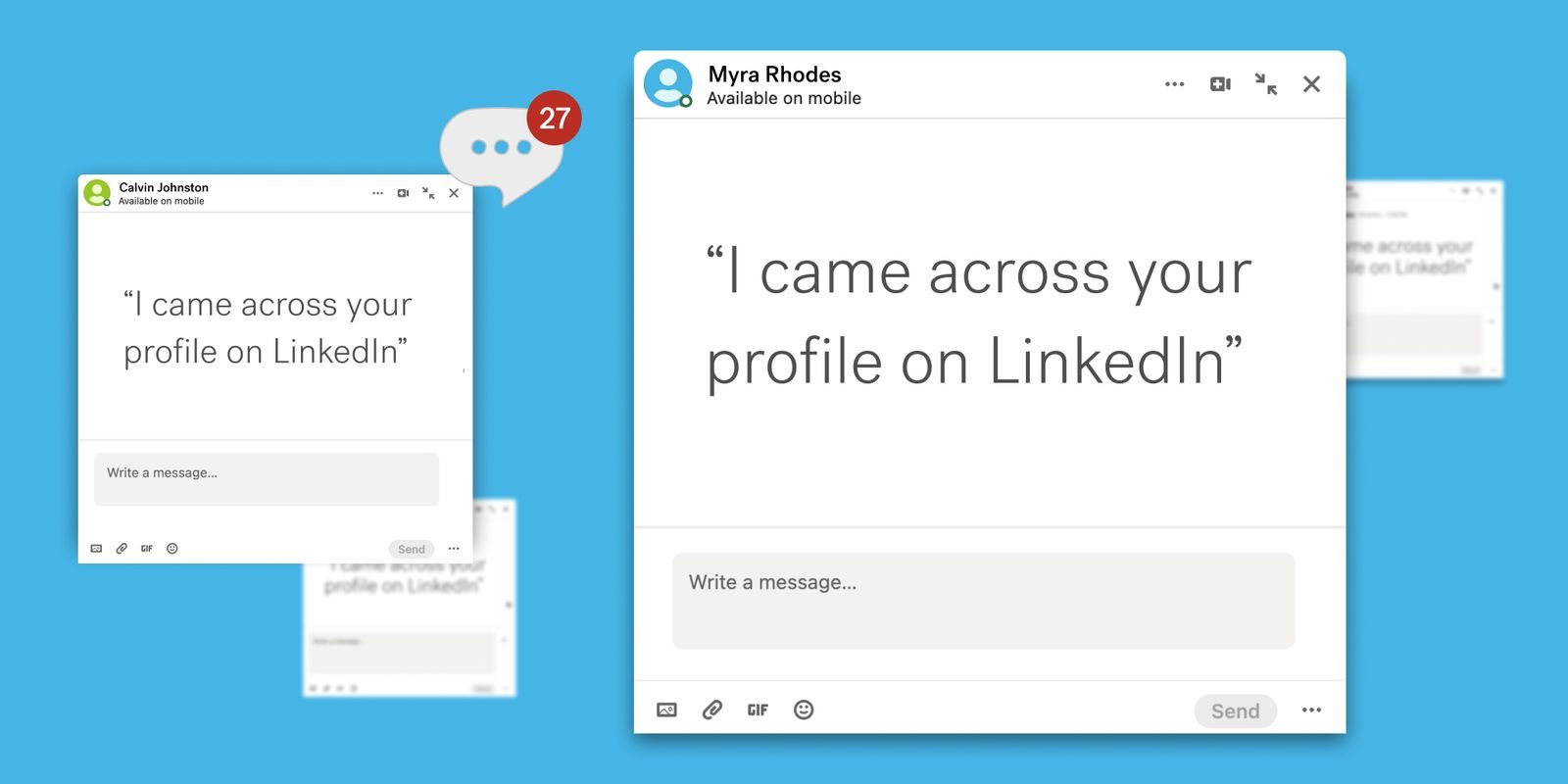
Dear talent sourcers around the world: Your job is really hard.
You need to ramp up on new roles every day. You need to find people who are qualified, interested, and ready to fill those roles . In an ever-changing talent market, that’s not easy!
But you’re undeterred. You Boolean search with the best of them. You out-hustle everyone. You know how to find candidates on LinkedIn at lightning speed. And not just any candidates—these candidates are going to truly delight your hiring team.
Now the tricky part: You need to actually get them into your pipeline. You need to send these candidates a message that gets read, and gets a response.
You click to send a note on LinkedIn , or maybe you’ve gone an extra step and found a Gmail address to get right into the personal inbox. You roll out your standard opener: I came across your LinkedIn profile. You tell them I love your background! You finish with a confident push for a phone call: Let’s chat on Thursday at 2.
Here’s the thing: None of this works.
On the surface it sounds fine—but data shows it doesn’t perform.
For example, here are just a few findings that Textio has uncovered in response-rate data:
-
Responses drop by 80% with generic discovery phrases like “I came across your profile on LinkedIn”
-
Responses increase by 20% when you reference something specific about a candidate’s background
-
Responses drop by 25% when you push people to agree to a specific time and date for a call
My guess is this doesn’t surprise you. You know your best candidates get dozens or maybe even hundreds of notes like this every single week. They have to be choosy about what to respond to. And why should they choose your message, when it seems careless or sounds like all the rest?
But how are you supposed to know what does work? You can absolutely find candidates on LinkedIn, but you’re not a professional writer, nor a mind-reader.
The short answer is data. You get data, and guidance, on how the words that you’re writing will land with various people. And you use that info to craft an informed and inclusive recruiting message that gets a response.
This is why we created Textio for recruiting mail. We knew that, like job posts or talent newsletters or any other hiring material, writing recruiting mail is hard when you’re trying to be inclusive and engaging.
My teammates know this better than most. In building Textio guidance, they’ve reviewed countless outreach messages. The verdict: Most are bland, and some are bad.
Take a quick tour through these gems for instance. These are real messages from our own inboxes:
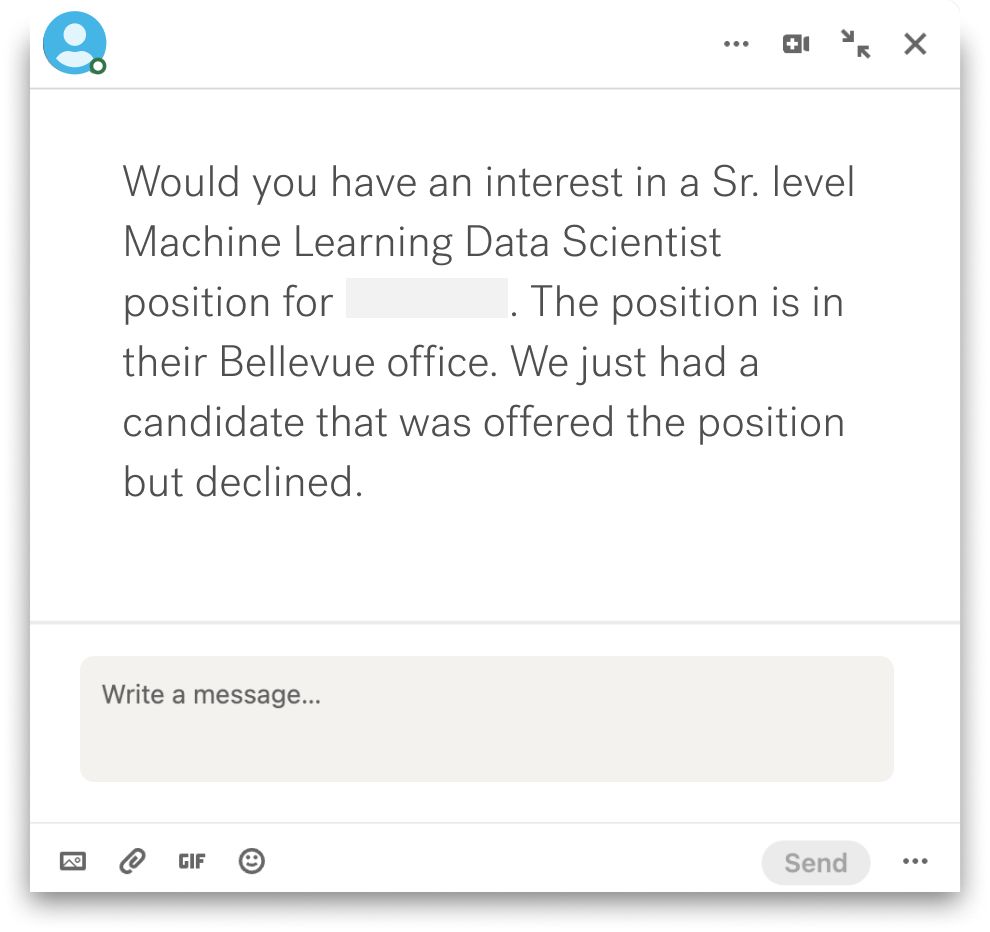
We like you! We really like you! Just not quite as much as the first person we tried to hire.
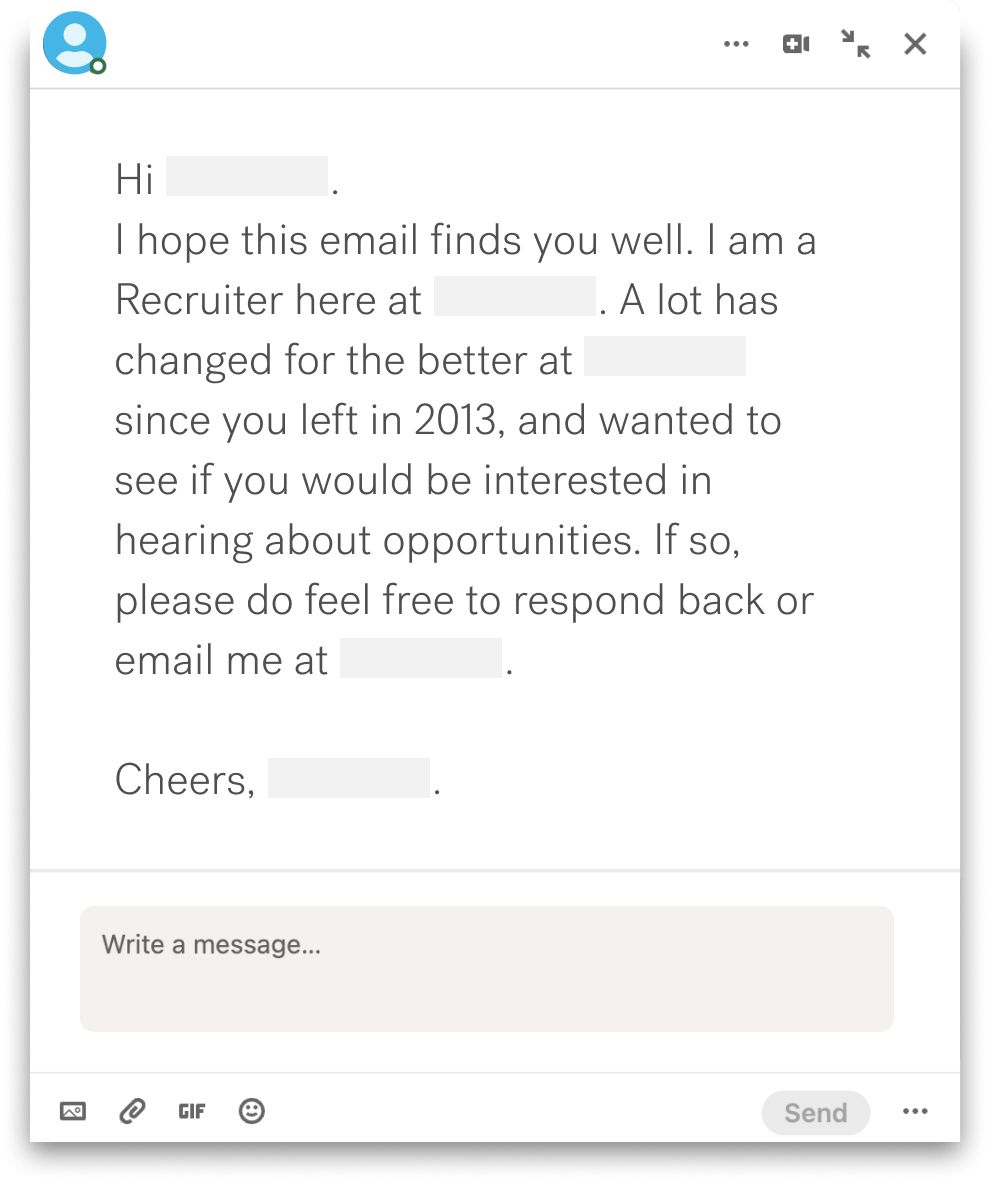
I know, this place was the absolute pits the first time you worked here. But it’s better now, I swear.
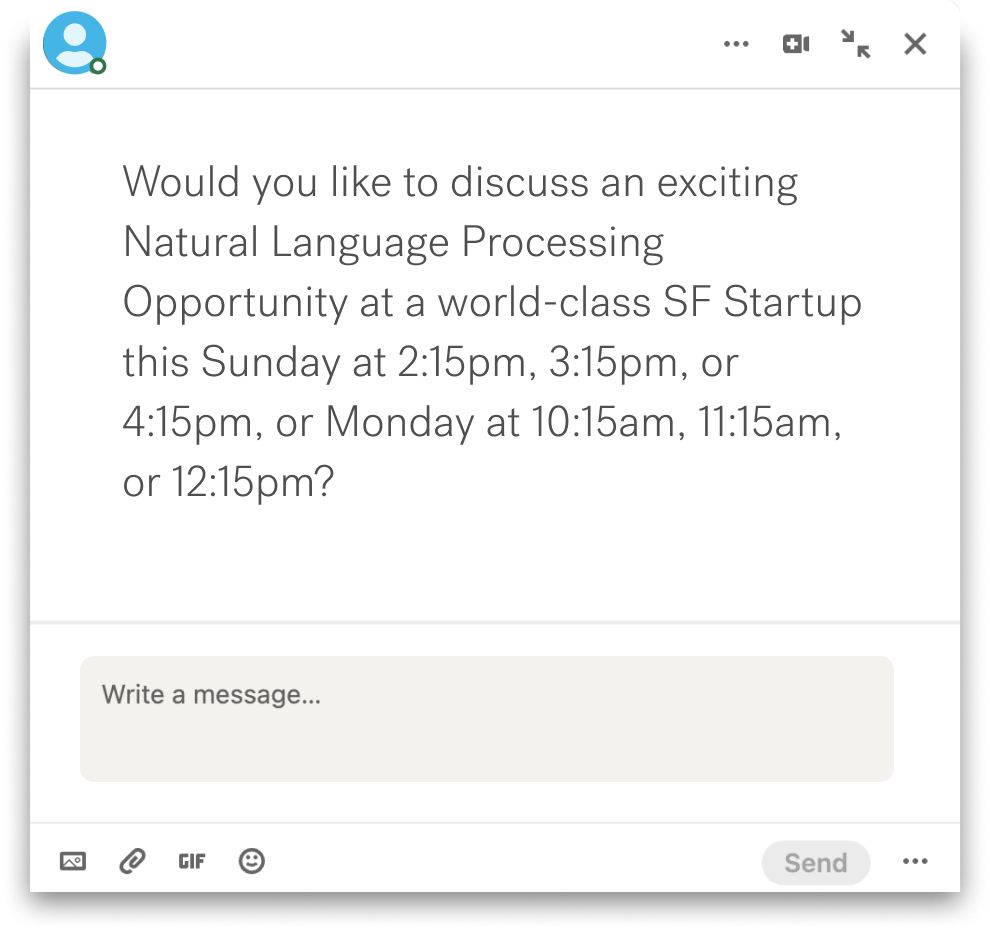
All the best job interviews happen on Sunday afternoons!

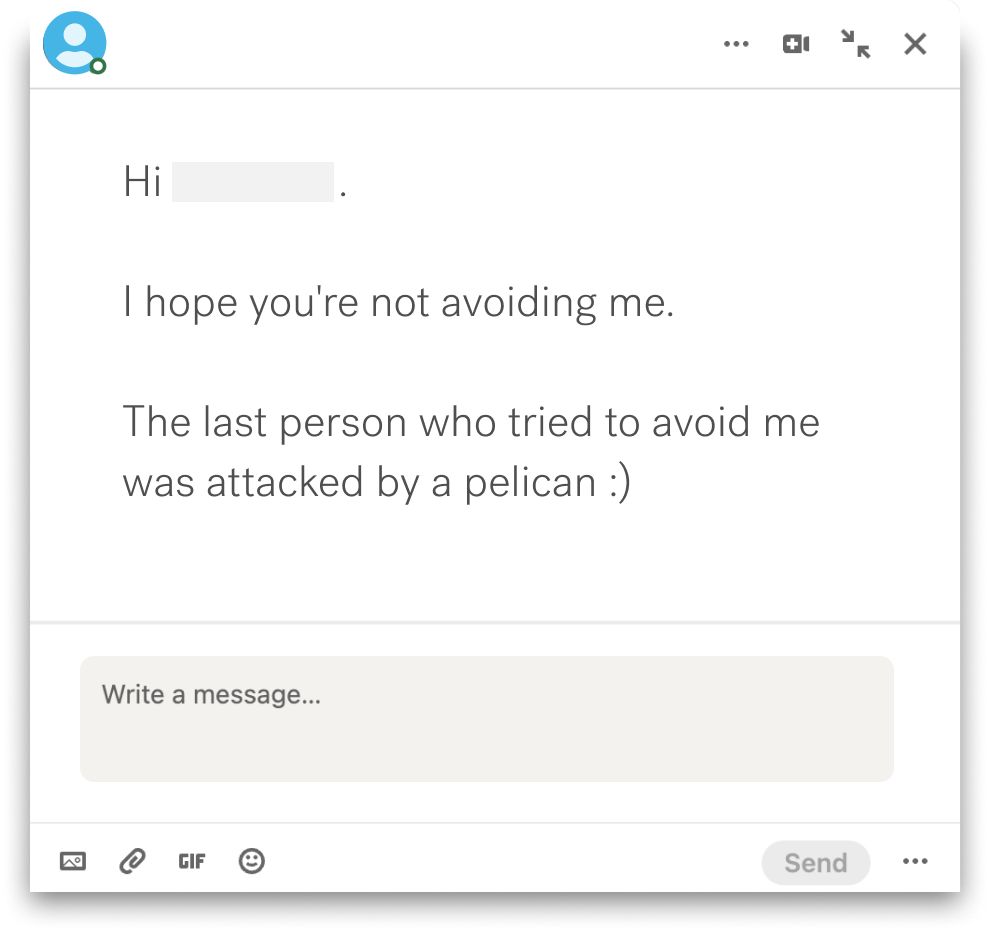
Threats as a recruiting strategy are not cute, even when they include references to cute wildlife.
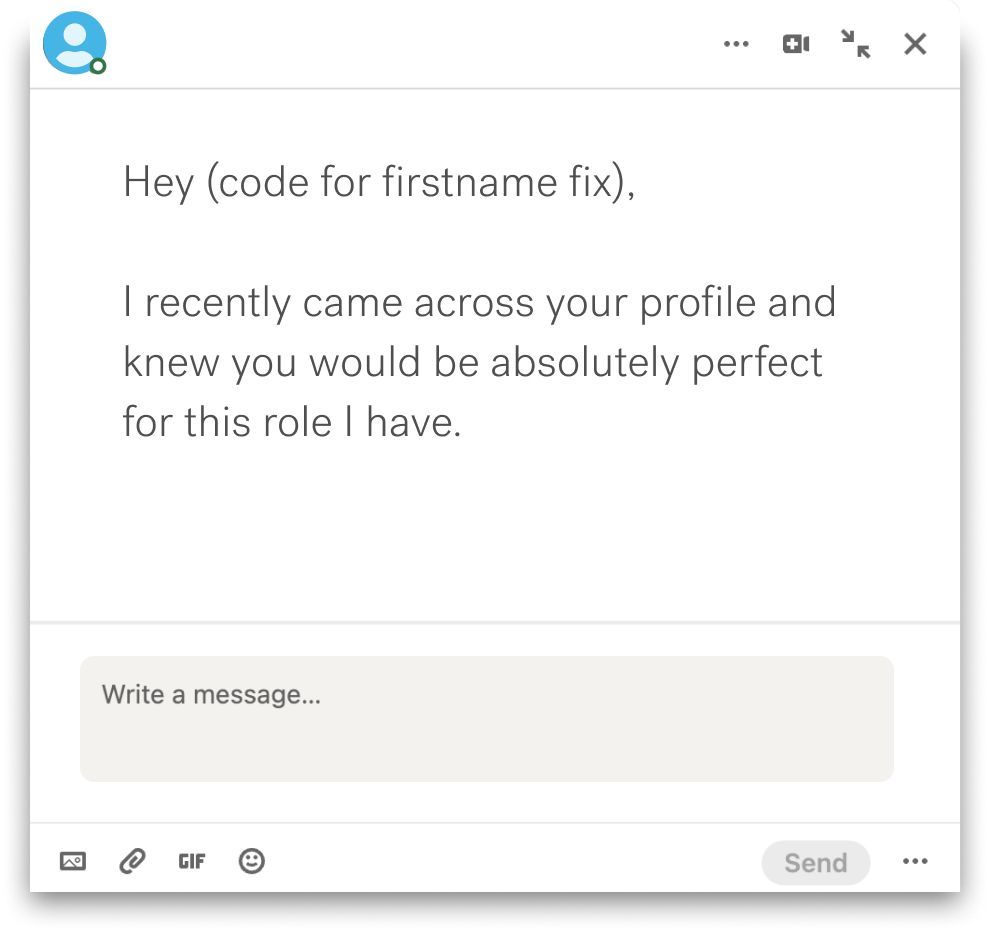
This greeting definitely makes me feel absolutely perfect for your role!
Ok, I would never write that! I hear you thinking. And I don’t doubt it. But I challenge you to go back and look through your own Sent Messages folder. Is bland better than bad?
Textio recruiting mail guidance shows you the impact of your words as you’re writing, and offers real-time suggestions to avoid bias and choose words that are more welcoming—and that work.
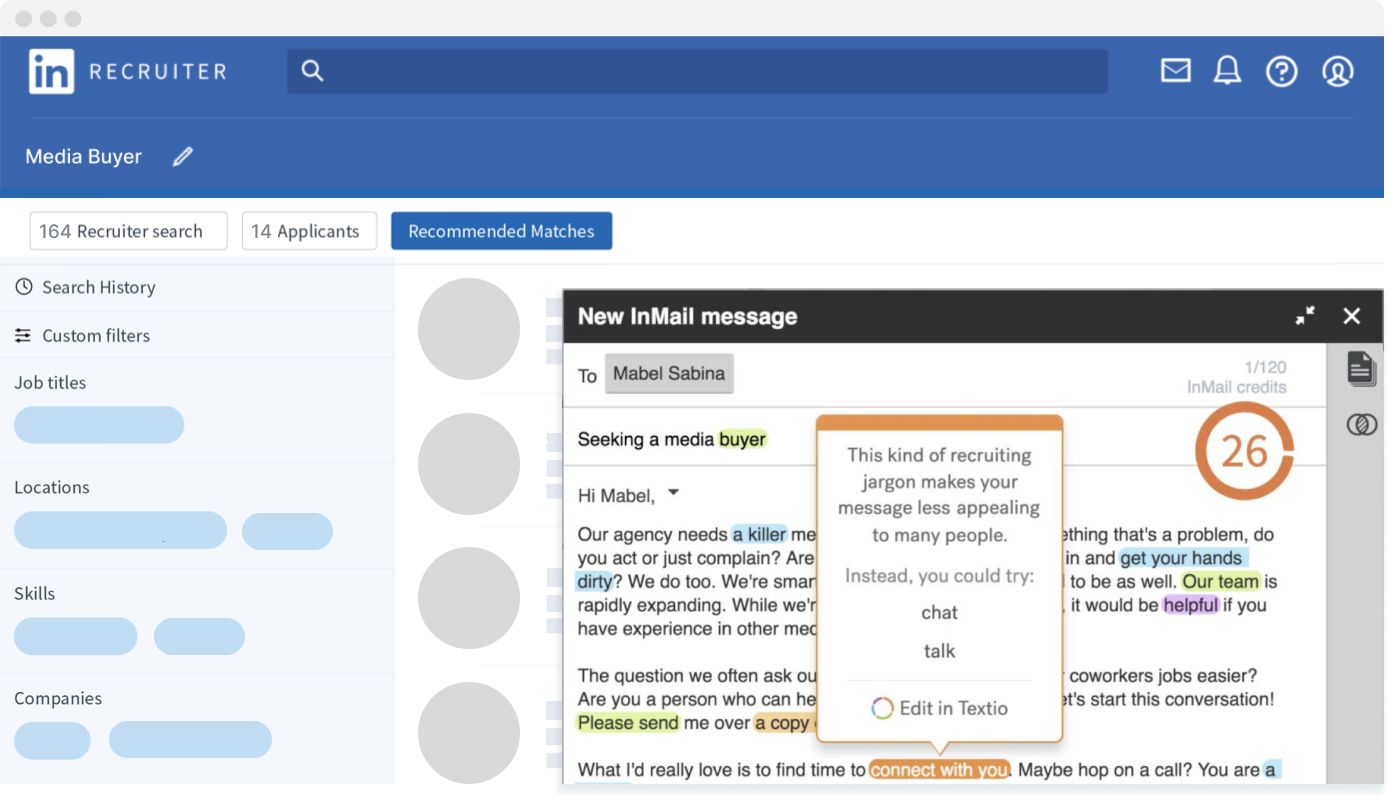
You might be thinking, “Well, what if I don’t have a Textio subscription?” You can still improve upon bland, unengaging recruiting mail. The goal is to lean into empathy. Take a second to focus your mind and actively choose to be compelling and considerate in your outreach. Or, take a few minutes and get certified in interrupting bias in hiring (it’s free!).
Even if you don’t have the data to “x-ray” your language, you can always take a beat to bring more thoughtfulness to your communication. And that’ll never steer you wrong.
If you’re still wondering how to find candidates on LinkedIn, the answer is to search—and write—with intention.